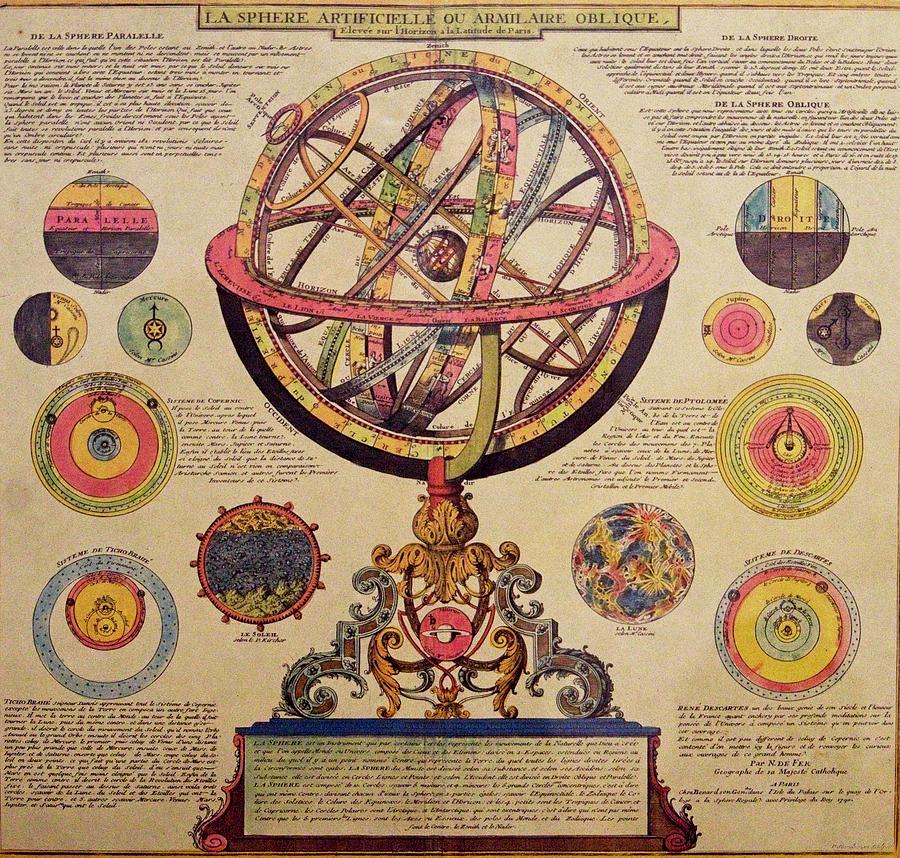A brief walk through the history of hollowed sphere’s.
1664
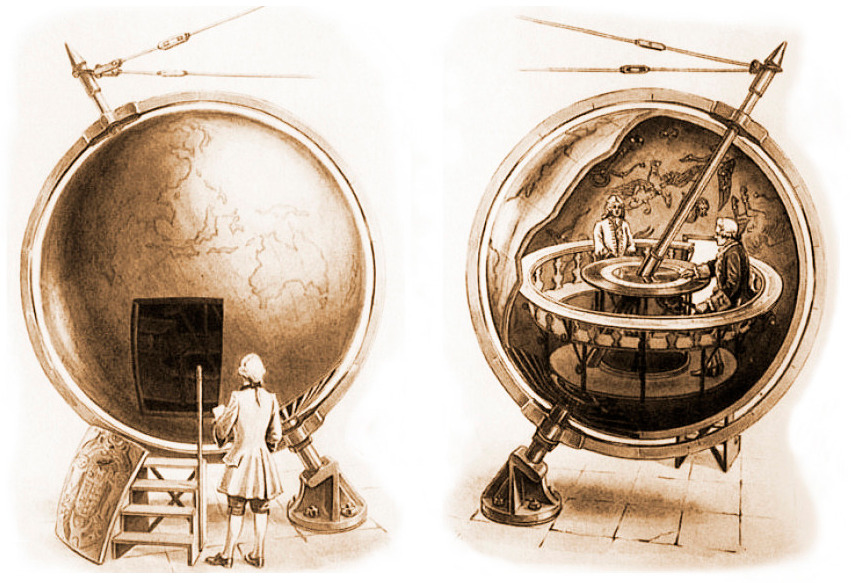
The Gottorp Globe, the world’s first modern planetarium, is completed in Germany. The hollow sphere, ten feet in diameter, is turned by water power; it has a map of the constellations on the interior and a map of the world on the outside. In 1714, it is given as a gift to Peter the Great but is destroyed by fire in 1747. The reconstructed globe, stolen by the Germans in World War II and recovered by US troops, now resides at the St. Petersburg Kunstkammer.
1699
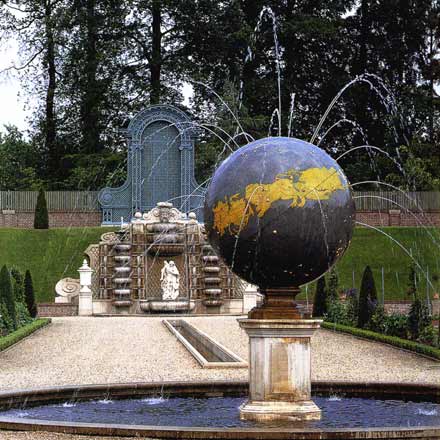
Daniel Marot completes the Celestial Sphere Fountain for the country palace of William of Orange and Princess Mary at Het Loo, the Netherlands. Marot’s spherical fountain is etched with a celestial map and spits water from a small hole in each star.
1784
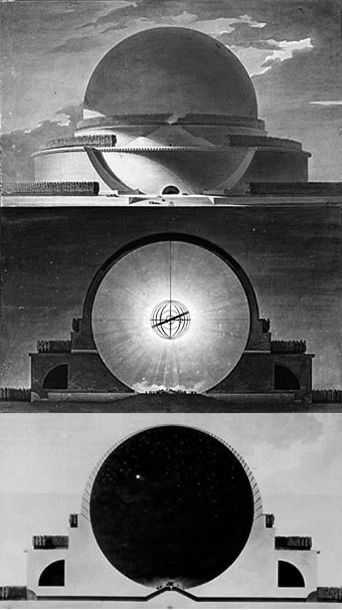
Visionary French architect Étienne-Louis Boullée designs his Cenotaph for Newton, a giant sphere punctured by holes that create the illusion of suspended stars. He writes, “O Newton! … I conceived the idea of surrounding thee with thy discovery, and thus, somehow, surrounding thee with thyself. … From whatever side we look at this shape, no trick of perspective can alter the magnificence of its perfect form … as soft and as flowing as it is possible to imagine.” Similarly believing that the sphere represents the most perfect expression of the sublime, fellow French architects Claude-Nicolas Ledoux, Jean-Jacques Lequeu, and Leon Vaudoyer all design spherical buildings during this period.
1851

James Wyld’s sixty-foot-tall, hollow, inverted Earth goes on display in Leicester Square, with a spiral staircase and viewing platforms running through the polar axis. Wyld’s concave projection is described by Punch magazine as “a geographical globule, which the mind can take in at one swallow.”
1892
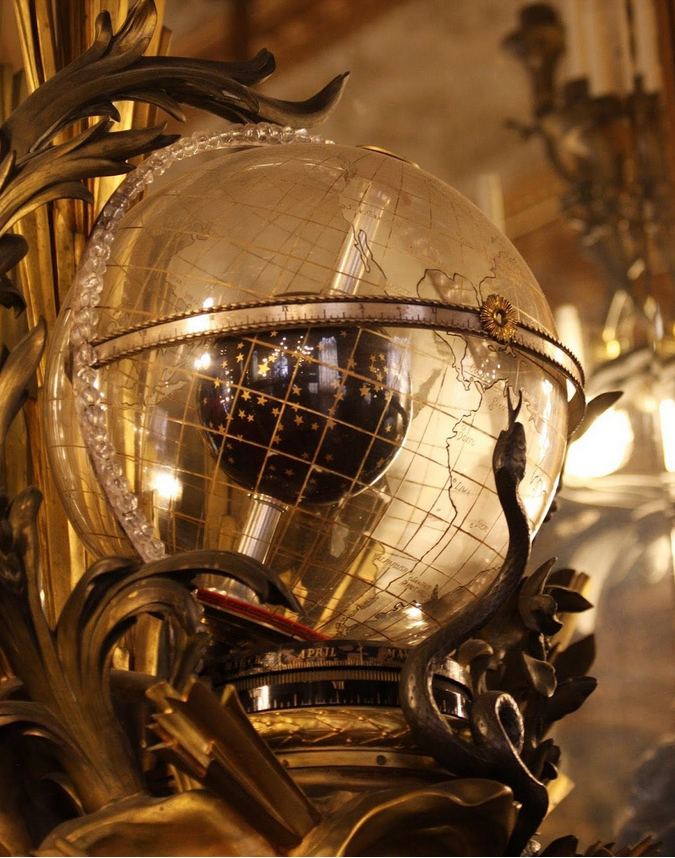
The Marble House is completed in 1892. This was built by one of the wealthiest families of their era, the Vanderbilts. The center piece Inside the “Grand Salon” of the Marble House is none other than an inverted Earth encompassing the Celestial Sphere.
1895
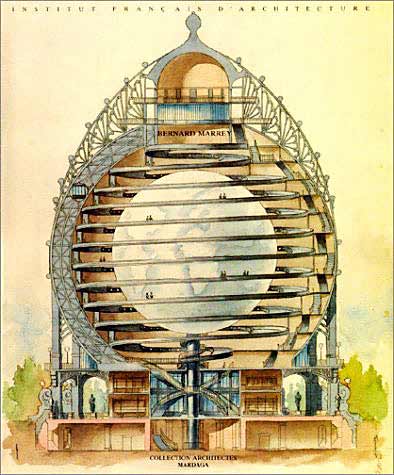
French geographer and anarchist Elisée Reclus proposes the construction of the largest inverted Earth yet, on the scale of 1:100,000. It would stand 418 feet tall and be regularly updated with the latest geographical information. Though the project receives modest support from Alfred Russel Wallace (who thought the globe need not be taller than 167 feet), and enthusiastic support from Patrick Geddes (who called it “no mere scientific model in its institute, but the image, the shrine, and temple of the Earth-mother”), it is never built.
1922
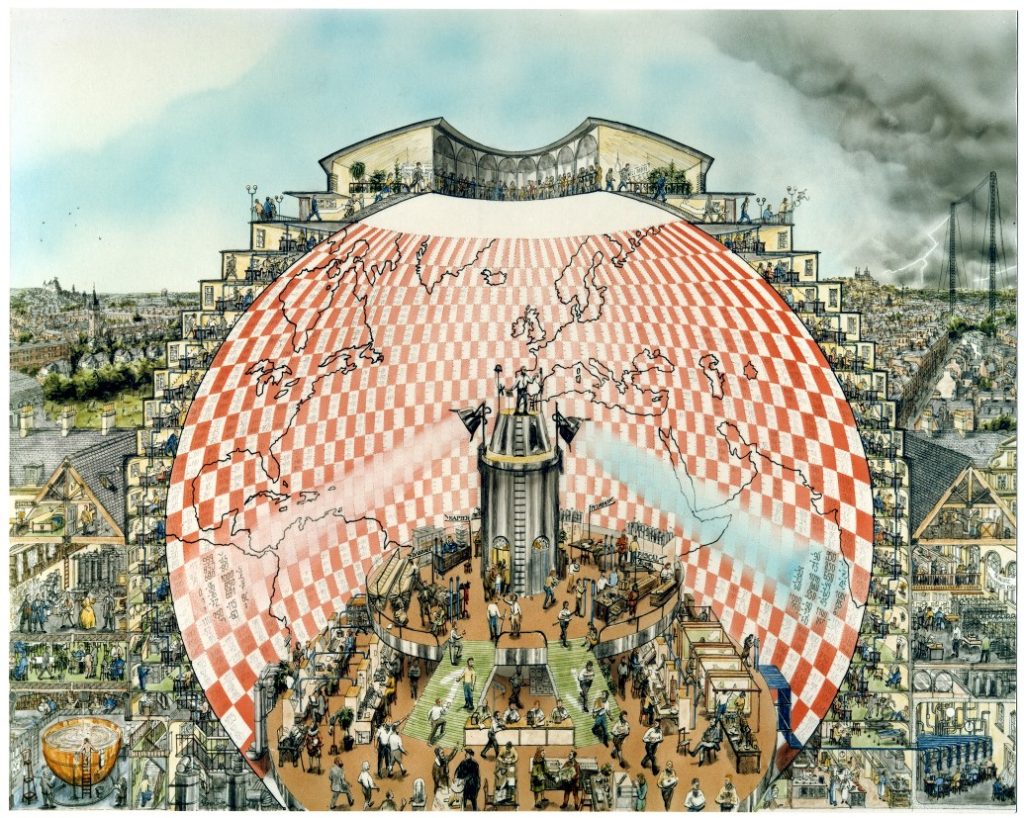
Meteorologist Lewis Fry Richardson, creator of the first dynamic model for weather prediction, proposes the creation of a “forecast factory” that would employ some sixty-four thousand human computers sitting in tiers around the circumference of an inverted Earth. Each calculator would be responsible for solving differential equations related to the weather in his quadrant of the earth. From a pedestal in the center of the factory, a conductor would orchestrate this symphony of equations by shining a beam of light on areas of the globe where calculation was moving too fast or falling behind.
1929
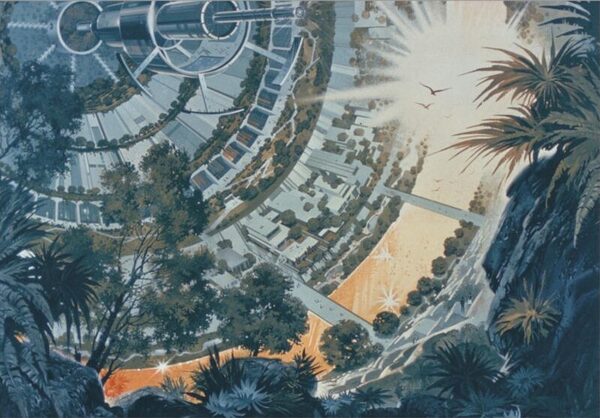
Scientist John Desmond Bernal proposes a hollow non-rotating spherical shell 10 mi (16 km) in diameter, intended to house a target population of 20,000 to 30,000 people to be launched into “space”.
1935
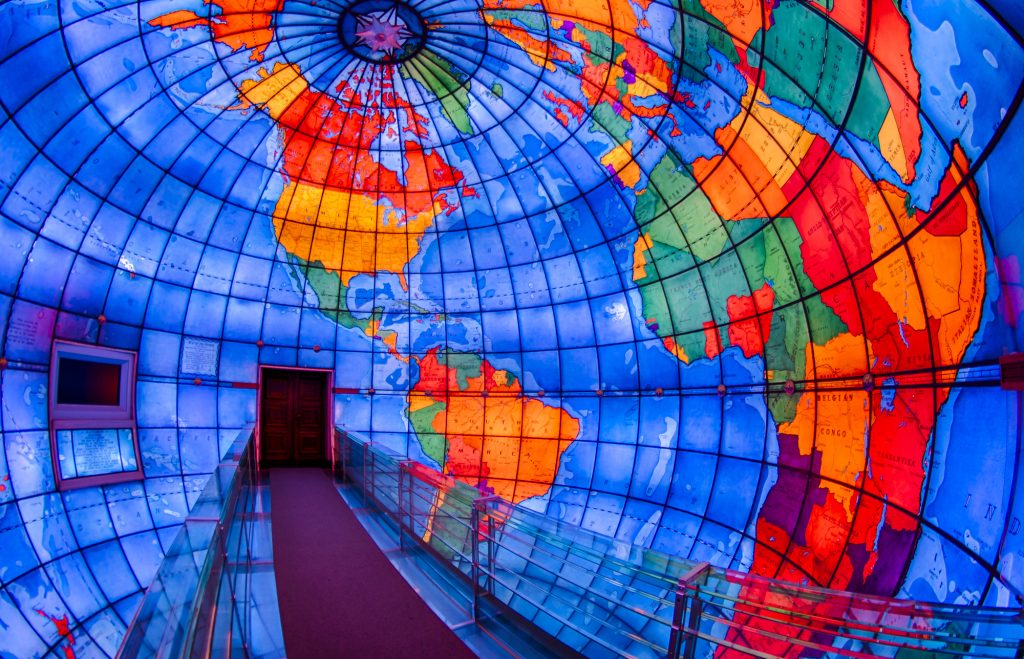
The three-story-tall stained glass Mapparium, an inverted Earth traversed by a glass bridge, opens at the Mary Baker Eddy Library in Boston. (Courtesy The Mary Baker Eddy Library, Boston, MA)
1939
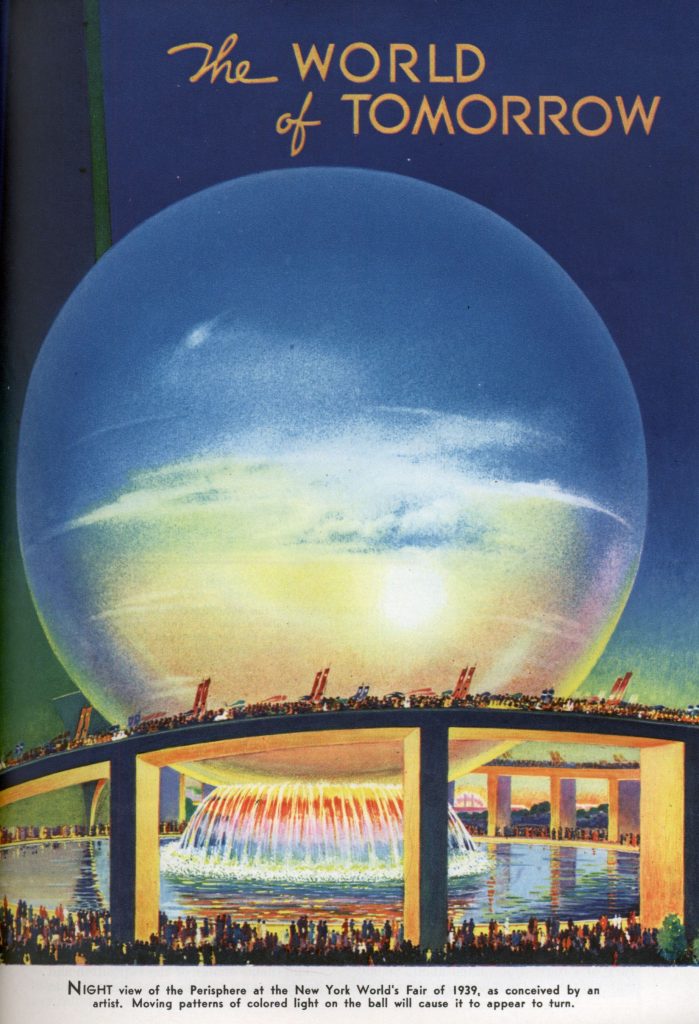
The centerpiece of the New York World’s Fair is a 700-foot triangular spire called the Trylon and the 180-foot tall Perisphere, a giant ball housing a model of a Utopian garden city of the future called “Democracity.” It is described in the official guide book as a “symbol of a perfectly integrated, futuristic metropolis pulsating with life and rhythm and music.”
1943
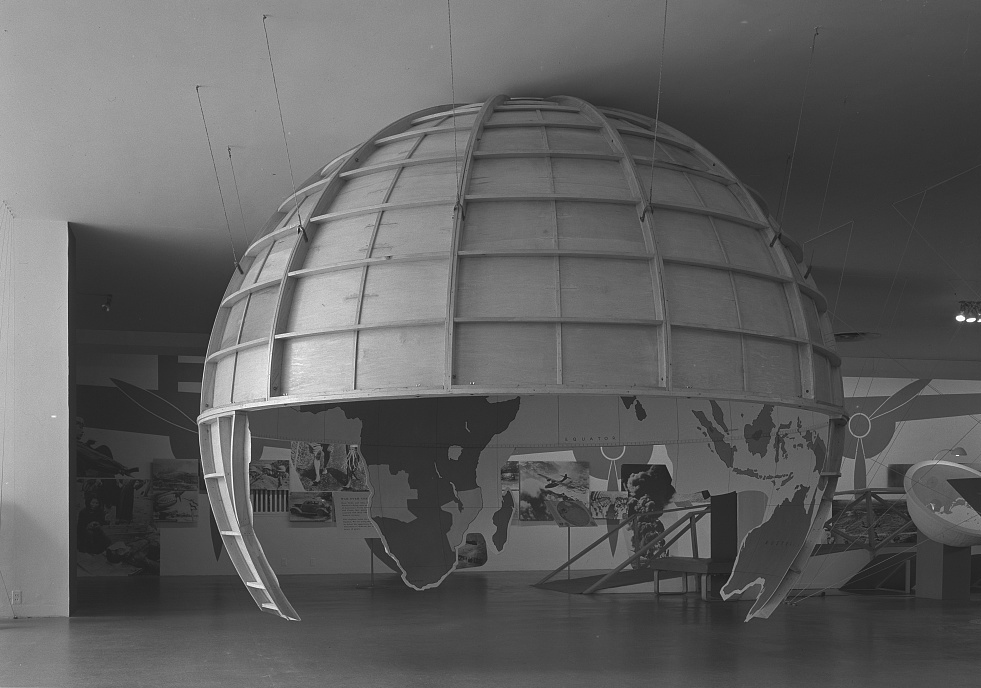
Herbert Bayer’s “Outside-In Globe” is put on display for his exhibition, “Airways to Peace: An Exhibition of Geography for the Future.” “The idea with the Outside-In Globe was to put the countries and everything on the inside,” Travers said. “So, you can go inside and experience the world as one.”
1958

Buckminster Fuller proposes the “Cloud Nine” project, a levitating city of tensegrity spheres, each a mile in diameter. Because the surface-to-volume ratio of such spheres would be vanishingly small, Fuller calculated that if trapped solar energy raised their internal temperature by a mere one degree, they would be able to float like balloons.
1959
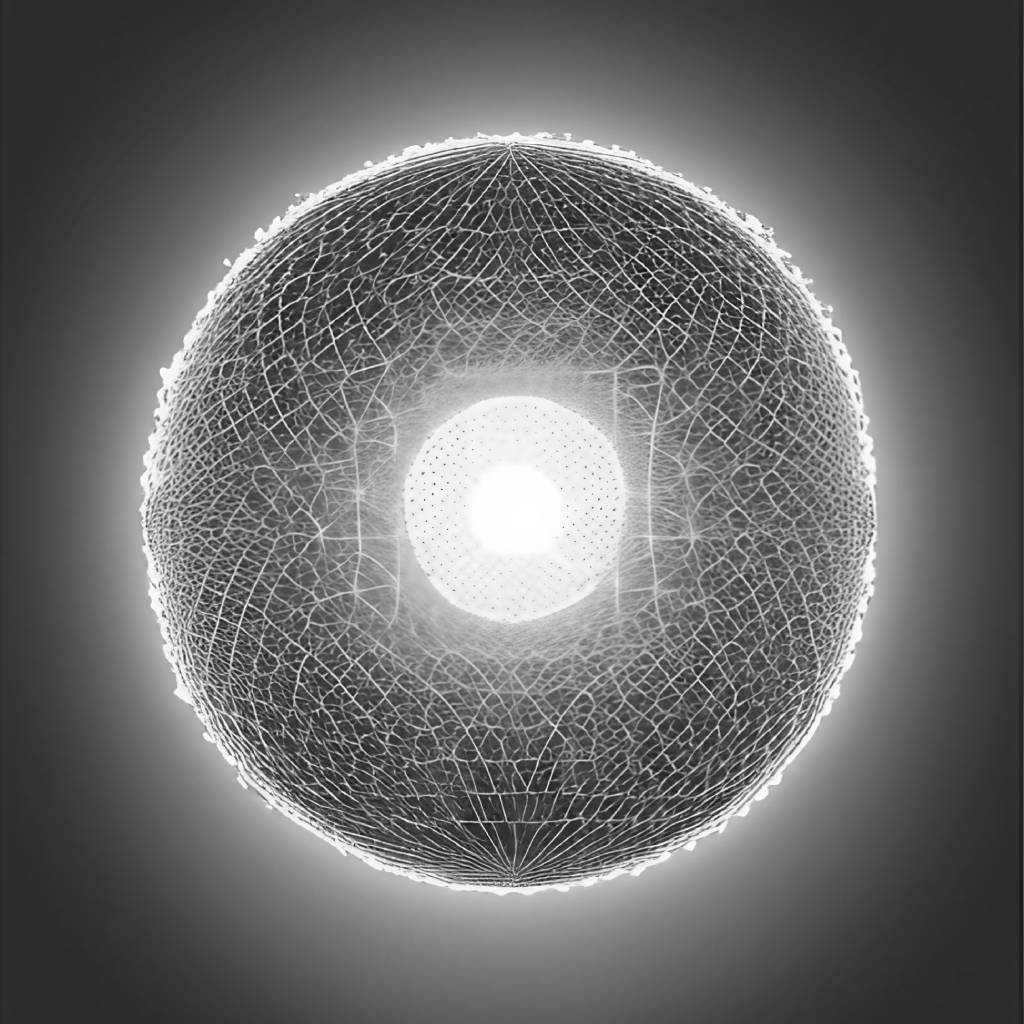
Physicist Freeman Dyson suggests that a giant shell of matter be constructed around a star to collect its total energy output. Dyson thought that the idea for such a sphere would be so self-evident to any advanced civilization that he suggested searching the skies for them as evidence of extra- terrestrial intelligence.
1966
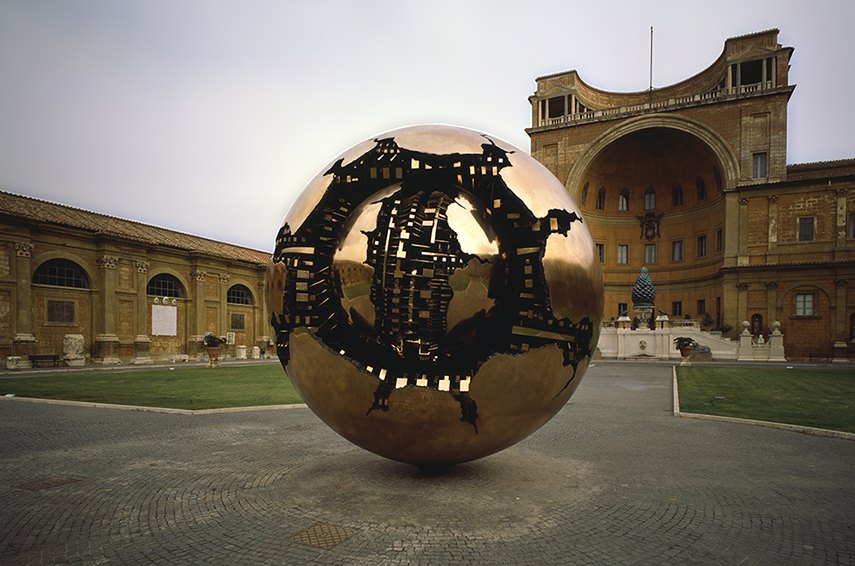
Italian sculptor Arnaldo Pomodoro was commissioned to create a 3.5-meter sphere for Expo 67 in Montreal titled “Sphere Within a Sphere”. These sphere’s have been placed all over the world from the Vatican to the UN headquarters.
1976
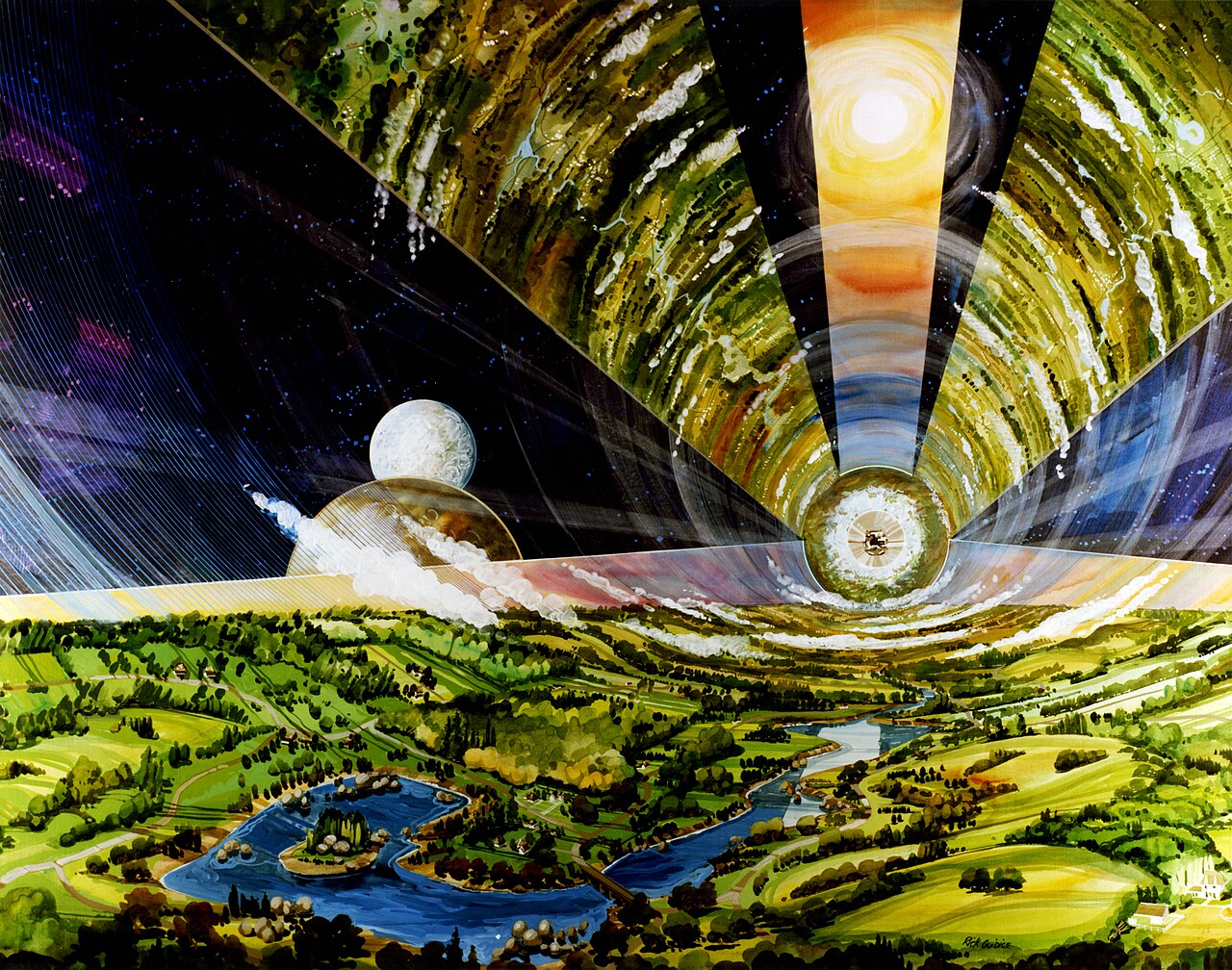
American physicist Gerard K. O’Neill proposes hollowed cylindrical colonies for the colonization of “space”.
1982
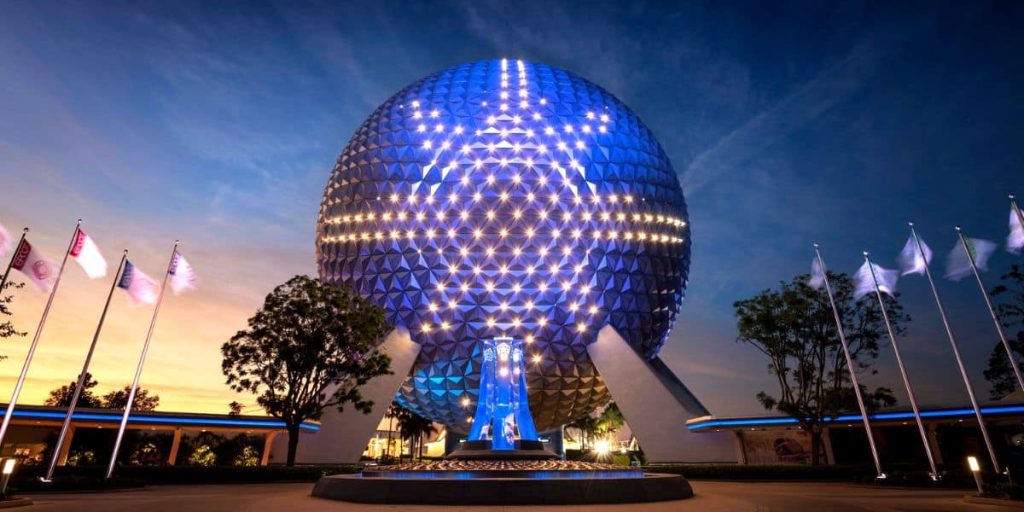
Spaceship Earth opens at Disney’s Epcot Center.
1989
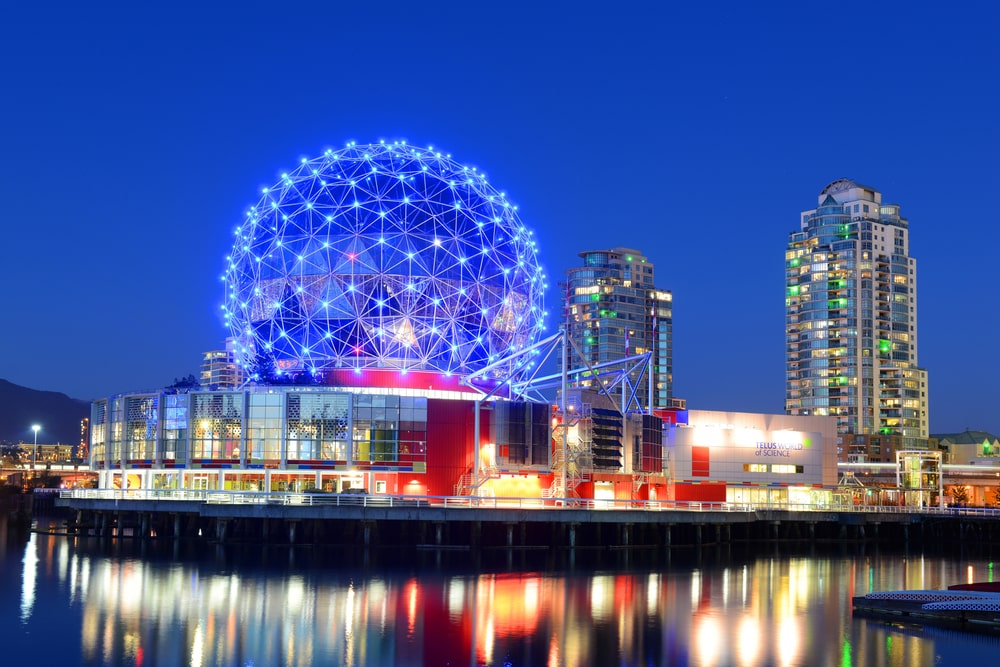
Science World in Vancouver, BC, opens it’s doors on May 6, 1989.
1999
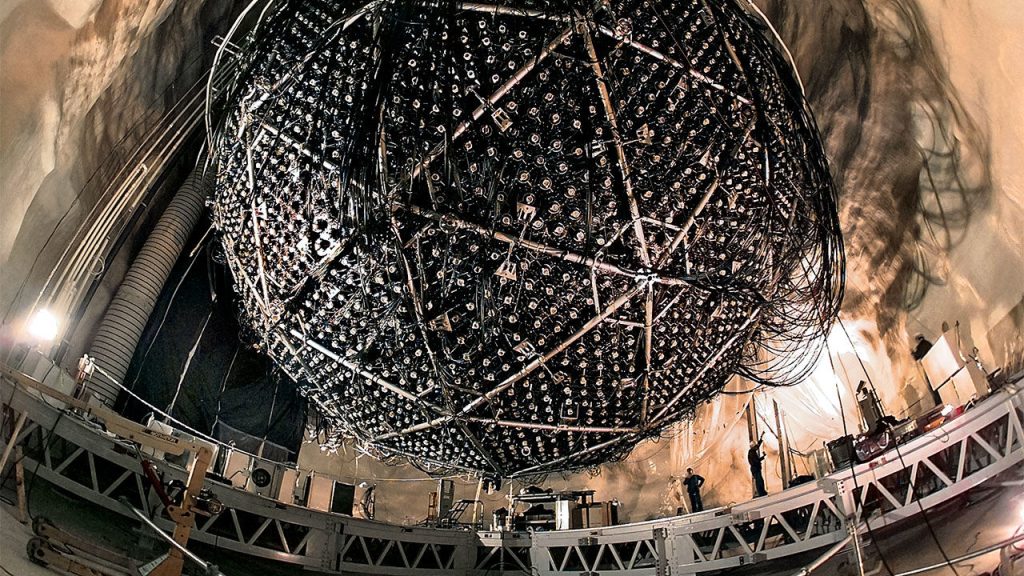
The Sudbury Neutrino Observatory begins operation more than a mile underground in an Ontario mine. The forty-foot sphere is filled with one thousand tons of heavy water. Its purpose is to detect solar neutrinos. This observatory also in a way resembles the Celestial Sphere.
2023
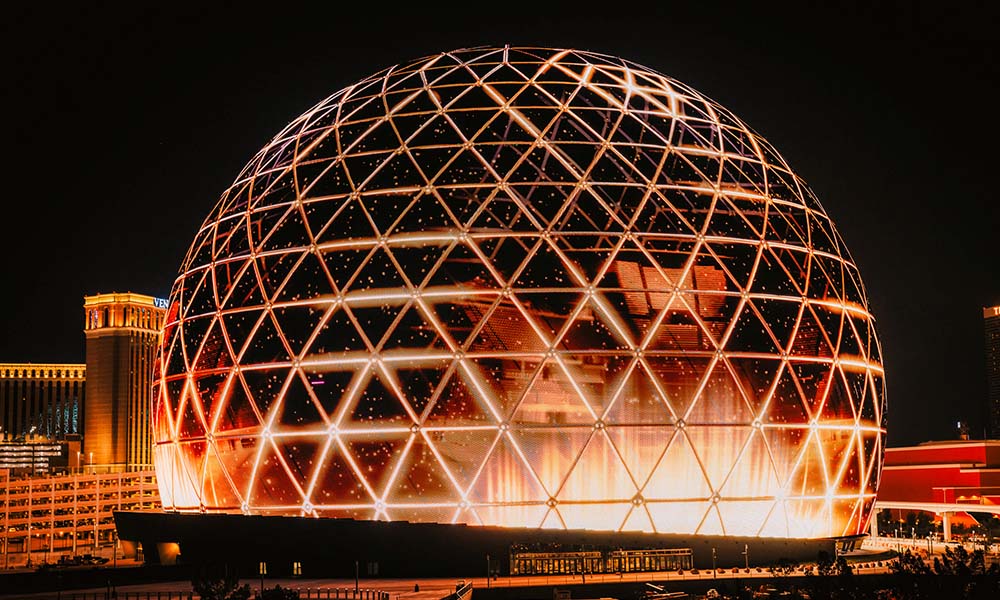
The Sphere in Las Vegas open’s September 29, 2023.
Have you noticed anything yet?




